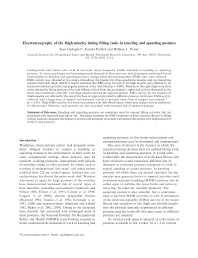Mining Publication: Electromyography of the Thigh Muscles during Lifting Tasks in Kneeling and Squatting Postures
Original creation date: January 2011
Underground coal miners who work in low-seam mines frequently handle materials in kneeling or squatting postures. To assess quadriceps and hamstring muscle demands in these postures, nine participants performed lateral load transfers in kneeling and squatting postures, during which electromyographic (EMG) data were collected. EMG activity was obtained at five points throughout the transfer for three quadriceps muscles and two hamstring muscles from each thigh. ANOVA results indicated that EMG data for nine of 10 thigh muscles were affected by an interaction between posture and angular position of the load lifted (p50.001). Muscles of the right thigh were most active during the lifting portion of the task (lifting a block from the participant’s right) and activity decreased as the block was transferred to the left. Left thigh muscles showed the opposite pattern. EMG activity for the majority of thigh muscles was affected by the size of the base of support provided by different postures, with lower EMG activity observed with a larger base of support and increased activity in postures where base of support was reduced (p50.05). Thigh EMG activity was lowest in postures with fully flexed knees, which may explain worker preference for this posture. However, such postures are also associated with increased risk of meniscal damage. Statement of Relevance: Kneeling and squatting postures are sometimes used for manual lifting activities, but are associated with increased knee injury risk. This paper examines the EMG responses of knee extensors/flexors to lifting in these postures, discusses the impact of posture and kneepads on muscle recruitment and explores the implications for work in such postures.
Authors: S Gallagher, JP Pollard, WL Porter
Peer Reviewed Journal Article - January 2011
NIOSHTIC2 Number: 20038118
Ergonomics 2011 Jan; 54(1):91-102
See Also
- Effects of Lifting in Four Restricted Postures
- Effects of Posture on Back Strength and Lifting Capacity
- Evaluation of Muscle Activity, Forces, Stresses, and Moments at the Knee During Kneeling and Squatting Tasks
- Forces and Moments on the Knee During Kneeling and Squatting
- Lifting in Stooped and Kneeling Postures: Effects on Lifting Capacity, Metabolic Cost, and Electromyography of Eight Trunk Muscles
- Locomotion in Restricted space: Kinematic and Electromyographic Analysis of Stoopwalking and Crawling
- Task-Specific Postures in Low-Seam Underground Coal Mining
- Thigh-Calf and Heel-Gluteus Contact Forces in High Flexion: Experimental Results
- Trunk Extension Strength and Muscle Activity in Standing and Kneeling Postures
- Working in Unusual or Restricted Postures
- Content source: National Institute for Occupational Safety and Health, Mining Program


 ShareCompartir
ShareCompartir
